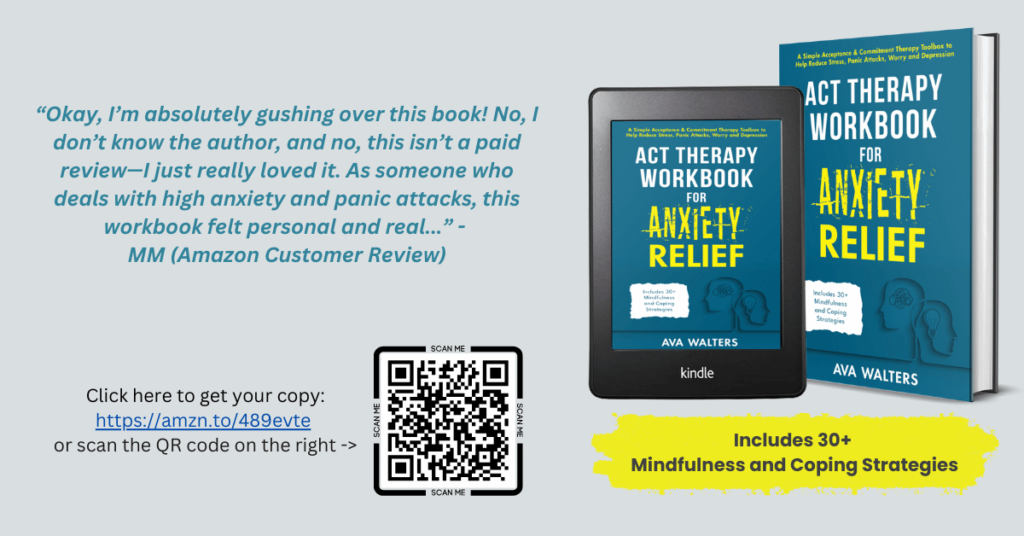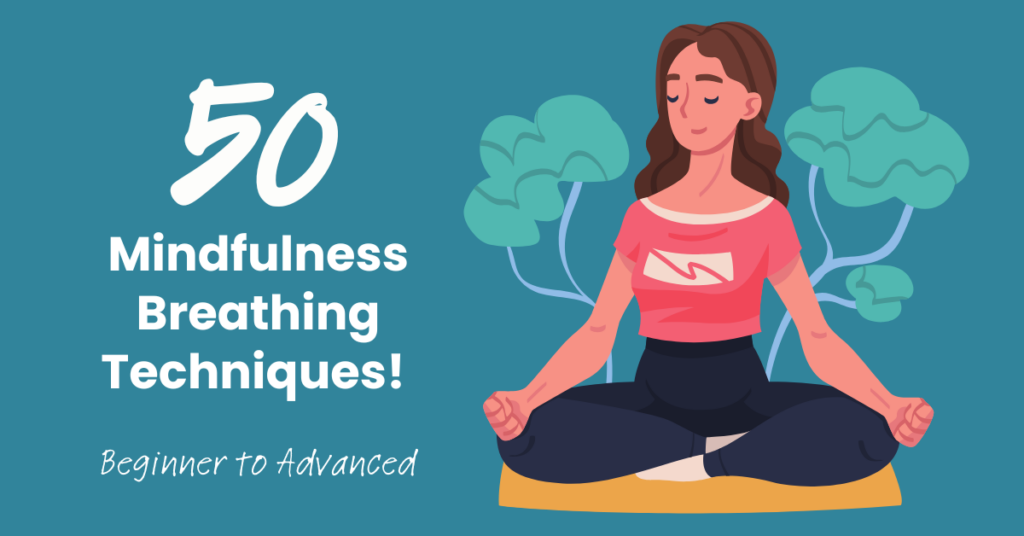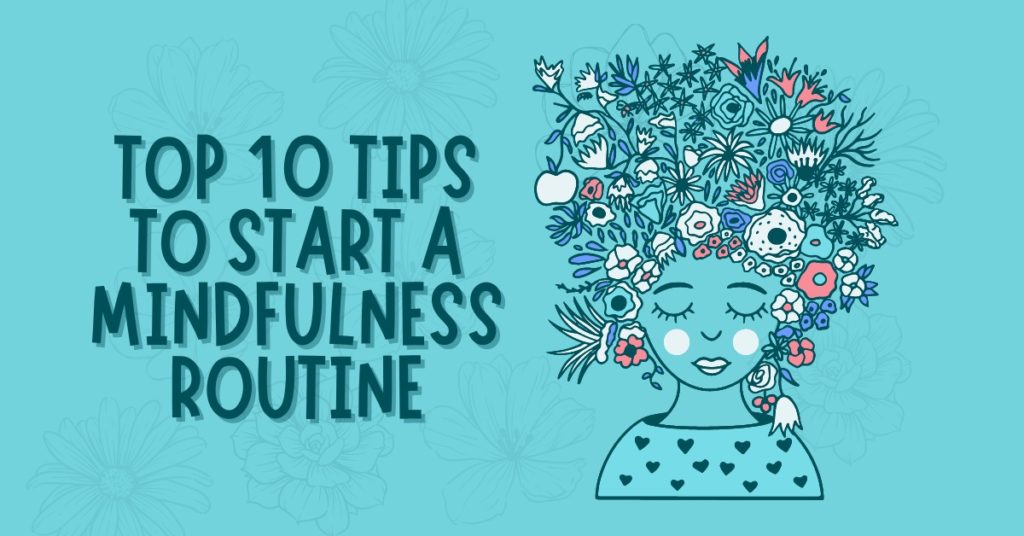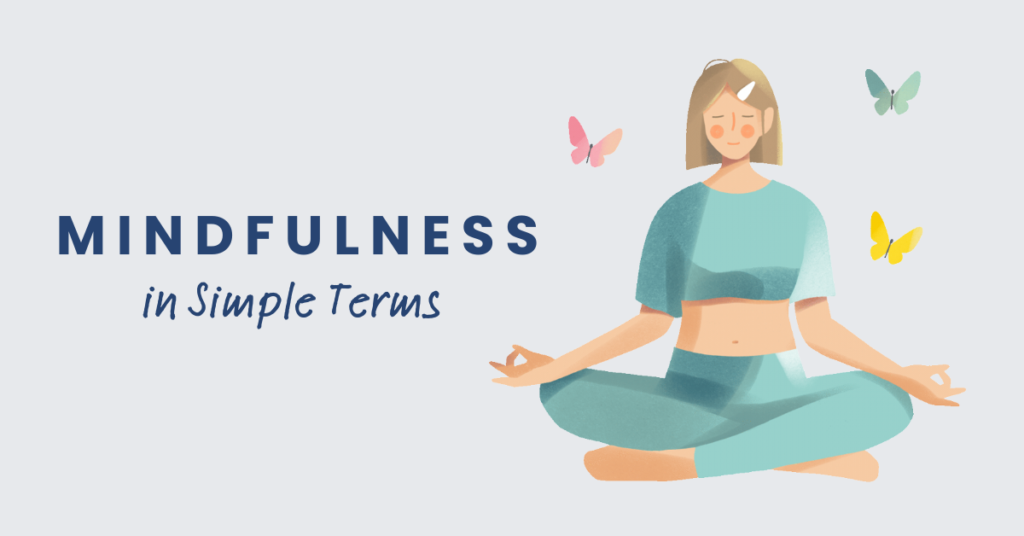Mindfulness breathing techniques are some of the most effective tools for managing stress, improving focus, and enhancing your overall well-being. (In short, it helps with our sanity!)
But what is mindfulness, really? At its heart, mindfulness means being fully present in the moment and aware of your thoughts, emotions, and surroundings—without judgment. It’s not about emptying your mind or achieving perfect calm. It’s about noticing and accepting the present moment AS IS.
So, where does breathing fit into mindfulness? Breathing is a natural anchor for mindfulness. It’s always with you, making it a reliable tool to bring your focus back to the present moment. Think about it; when you pay attention to your breath, you actually interrupt the cycle of overwhelm, stress, or overthinking and give your body and mind a chance to reset.
In this guide, you’ll discover 50 mindfulness breathing techniques tailored for all levels—beginner to advanced. Want to explore a technique in more depth? Simply click on it for a detailed, step-by-step exercise. Let’s get started!
Beginner Mindfulness Breathing Techniques
If you’re just starting, these techniques are simple and easy to follow. They help you build a foundation for mindfulness.
- Diaphragmatic Breathing (Belly Breathing): Place one hand on your belly and breathe deeply, feeling your belly rise and fall.
- Sensory Breathing: Focus on the sensation of air entering and leaving your nostrils.
- Mindful Observation Breathing: Observe your breath without changing its natural rhythm.
- Counting Breaths: Silently count each breath as you inhale and exhale, up to 10, then start over.
- Box Breathing (Square Breathing): Inhale for 4 counts, hold for 4 counts, exhale for 4 counts, and hold again for 4 counts.
- Equal Breathing (Sama Vritti): Match the length of your inhale and exhale, such as 5 seconds in and 5 seconds out.
- 4-7-8 Breathing: Inhale for 4 seconds, hold your breath for 7 seconds, and exhale slowly for 8 seconds.
- Anchor Breathing: Use your breath as a mental anchor to bring your attention back whenever your mind wanders.
- Soothing Breath: Inhale deeply through your nose and exhale gently through pursed lips as if blowing out a candle.
- Extended Exhale Breathing: Make your exhale longer than your inhale, such as by inhaling for 3 seconds and exhaling for 6 seconds.
Relaxation-Focused Breathing Techniques
These techniques help calm your mind and body, making them perfect for stress relief or unwinding after a long day.
- Progressive Relaxation Breathing: Pair each exhale with consciously relaxing a specific body part.
- Three-Part Breathing (Dirga Pranayama): Breathe into your belly, ribs, and chest in a wave-like motion.
- Breathing with Visualization: Imagine inhaling peace and exhaling tension.
- Ocean Breathing (Ujjayi): Constrict the back of your throat slightly to create a soft ocean-like sound while breathing.
- Balloon Breathing: Visualize your belly as a balloon inflating with each inhale and deflating with each exhale.
- Heartbeat Breathing: Sync your breathing with your heartbeat for a deeply calming effect.
- 5-5-5 Grounding Breath: Pair slow breathing with identifying five things you can see, hear, and feel.
- Pause and Focus Breathing: Pause briefly at the top of each inhale, and the bottom of each exhale to deepen your awareness.
- Gentle Whisper Breathing: Breathe out as if you’re whispering a soft “ha” sound, then inhale naturally.
- Wave Breathing: Imagine your breath flowing in and out like waves gently lapping on a shore.

Focus-Enhancing Breathing Techniques
Use these techniques to improve concentration and mental clarity during work, study, or meditation.
- Mantra Breathing: Pair your breath with a calming word or phrase, like “peace” on the inhale and “calm” on the exhale.
- Alternate Nostril Breathing (Nadi Shodhana): Inhale through one nostril while closing the other, then switch.
- Sensory Focus Breathing: Focus on the sound, feel, or even temperature of your breath.
- Humming Breath: Exhale while humming softly to create a vibration that focuses your mind.
- Ratio Breathing: Adjust your inhale-to-exhale ratio to 1:2 (e.g., inhale for 3 seconds, exhale for 6).
- Pause-and-Notice Breathing: Take a moment between breaths to notice how your body feels.
- Breath Counting Reset: Count backwards from 50 with each breath, resetting if you lose track.
- Directional Breathing: Imagine sending your breath to different areas of your body, like your hands or feet.
- Pursed-Lip Breathing: Inhale through your nose and exhale slowly through pursed lips to control your breathing rate.
- Mindful Sighing: Take a deep inhale and let out a long, audible sigh to reset your focus.
Energizing Breathing Techniques
Feeling sluggish? These breathing techniques can boost your energy and motivation.
- Breath of Fire: Take short, rapid breaths through your nose while engaging your diaphragm.
- Kapalabhati (Cleansing Breath): Forcefully exhale through your nose with short, passive inhales.
- Stimulating Breath (Bhastrika): Inhale and exhale quickly and forcefully, like bellows.
- Power Breath: Inhale deeply through your nose and exhale sharply through your mouth.
- Counting Forward Breathing: Count up with each breath to energize your focus and keep your mind active.
- Pumping Breath: Take short, fast breaths while standing and gently bouncing your knees.
- Dynamic Movement Breathing: Combine breathing with light movement, like shaking your hands or stretching.
- Rising Energy Breathing: Visualize energy rising through your body with each inhale.
- One-Minute Power Breathing: Take 30 deep, fast breaths followed by a 30-second breath hold to reset your energy.
- Quick Reset Breathing: Take 10 quick inhales and exhales to shake off fatigue.
Advanced Mindfulness Breathing Techniques
These techniques require practice and focus but can bring deeper relaxation or higher states of awareness.
- Resonant Breathing: Slow your breathing to about 5-6 breaths per minute to enhance heart rate variability.
- Loving-Kindness Breathing: Breathe in compassion for yourself and exhale compassion for others.
- Holotropic Breathing: Use controlled, rhythmic breathing to enter a meditative or trance-like state.
- Circular Breathing: Keep your breathing continuous with no pauses between inhales and exhales.
- Wim Hof Method: Combine deep breaths and breath holds to boost resilience and focus.
- Zen Counting Breaths: Count each inhale and exhale up to 10, focusing intensely on each breath.
- Breathing with Body Scan: Combine deep breathing with scanning your body for areas of tension.
- Mindful Walking with Breathing: Sync your breath with your footsteps during a slow, mindful walk.
- Silent Breath Retention: Hold your breath for a moment of stillness between inhales and exhales.
- Energy Channel Breathing: Visualize breath moving through energy channels (chakras) in your body.
How to Start Your Mindfulness Breathing Practice
Start small. Choose one or two techniques that resonate with you and practice them daily. Set aside 5-10 minutes for your practice, and then gradually increase the duration as you get comfortable. You don’t need special equipment—just find a quiet space where you can sit or lie down comfortably.
If you’re a beginner, start with Belly Breathing or Counting Breaths. If you’re looking for stress relief, try relaxation-focused techniques like Extended Exhale Breathing. If you’re feeling tired, energizing methods like Breath of Fire can give you a boost. And when you’re ready to really deepen your mindful breathing practice, advanced techniques like Resonant Breathing or Holotropic Breathing await.
Mindfulness breathing techniques offer a simple yet powerful way to improve mental, emotional, and physical well-being—at zero cost. The important thing to remember here is consistency. Even a few minutes of mindful breathing each day can lead to significant benefits over time. So, take a deep breath, and let your mindfulness journey begin!



